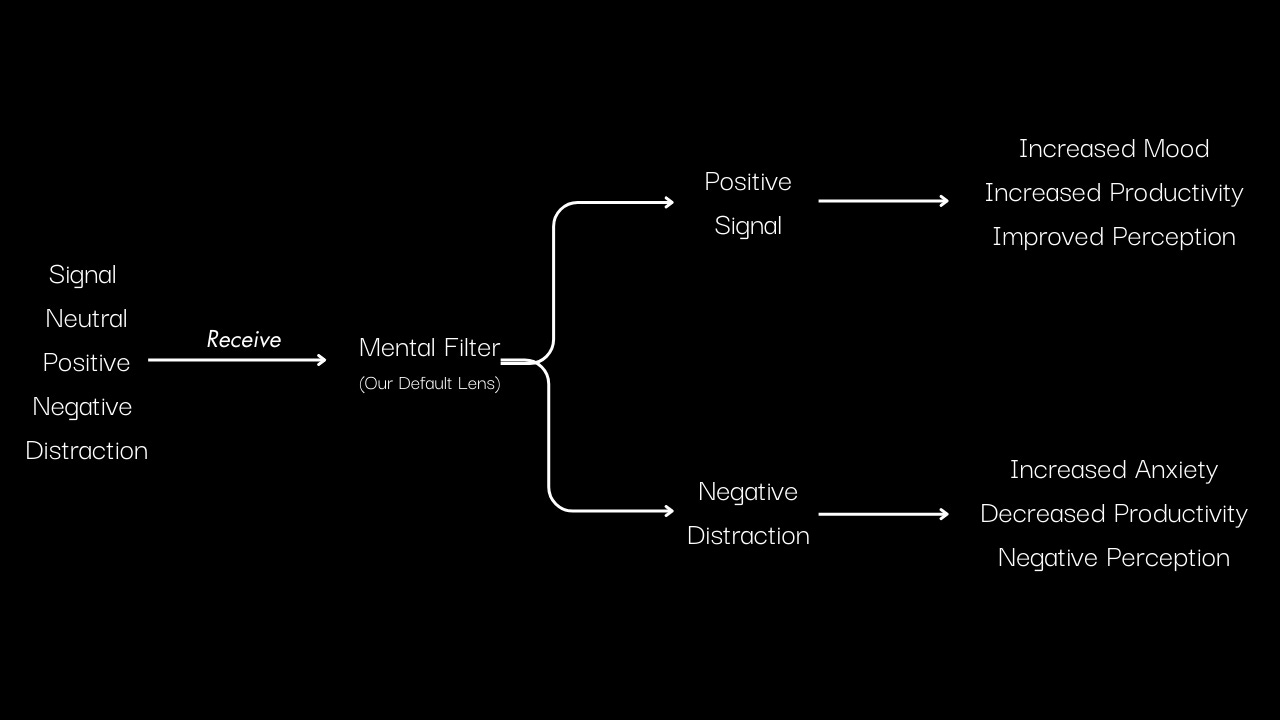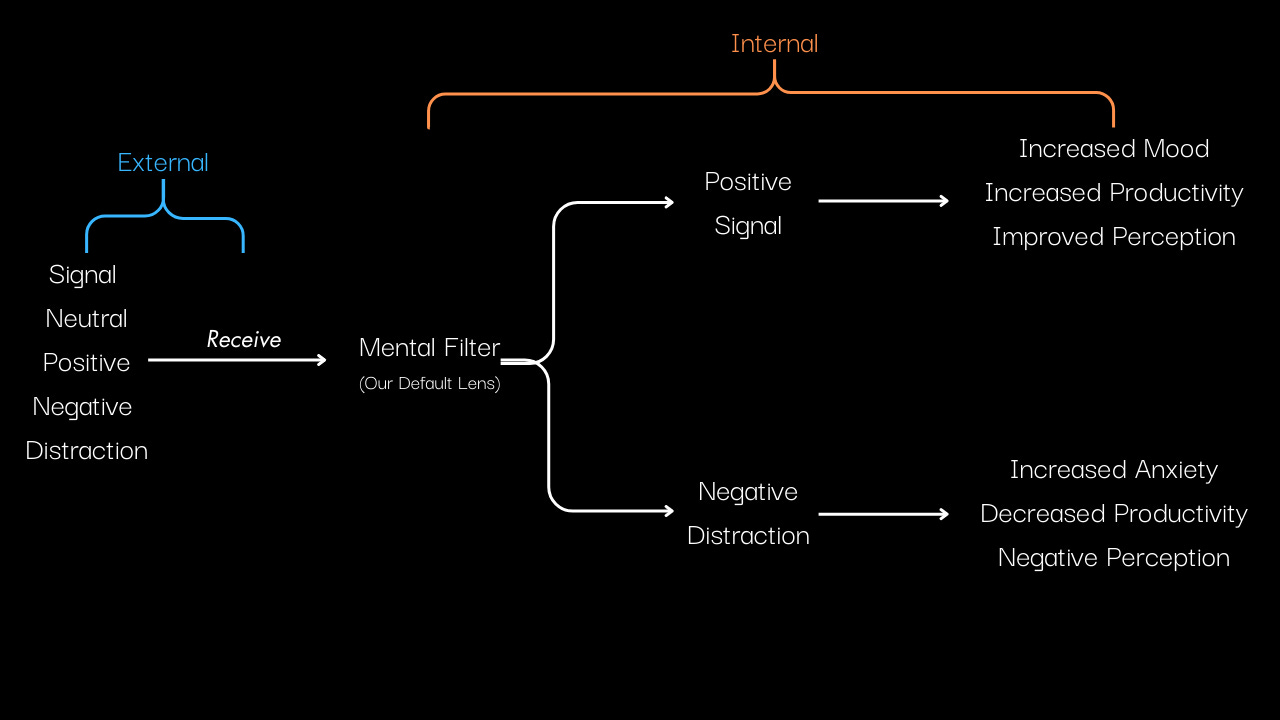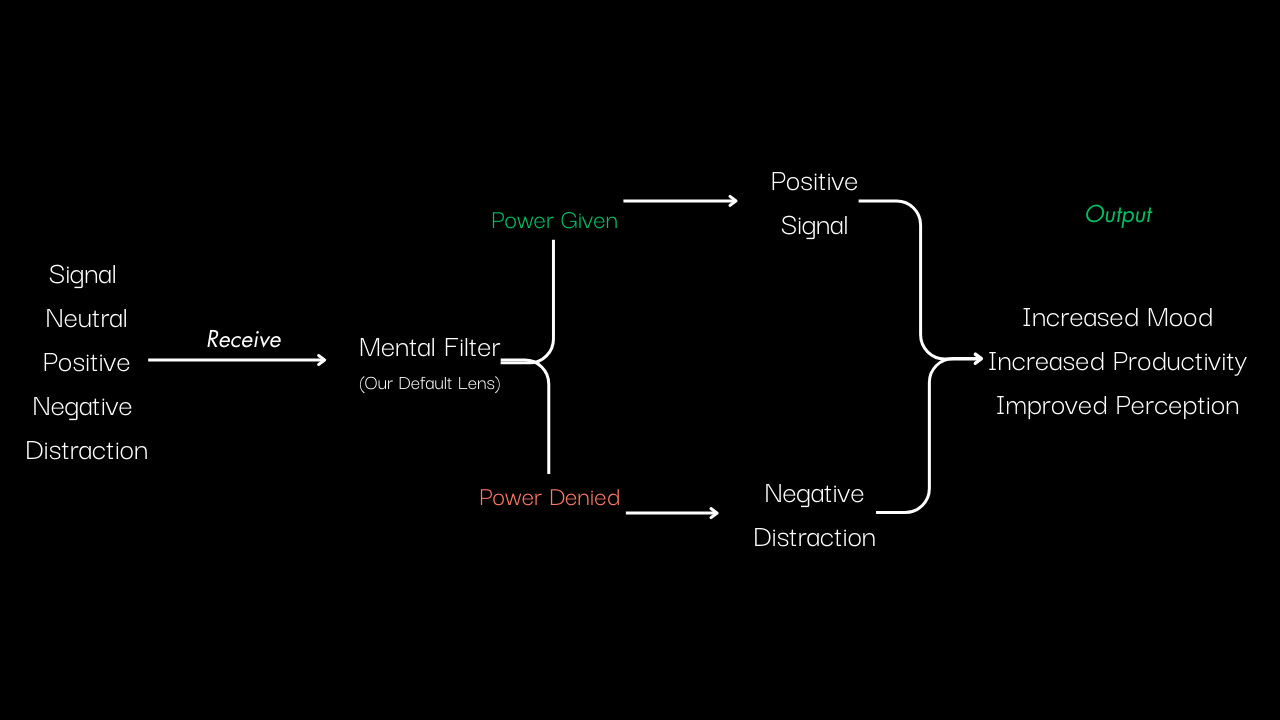Mental Filtering: Nature's Processing System
Cognitive Distortion Series #2

In the fast-paced world of today, our minds receive an overwhelming amount of information. Our brains have developed a system of filtering, allowing us to focus on what matters most.
This cognitive mechanism, known as mental filtering, plays a vital role in shaping our perceptions and decisions.
Understanding Mental Filtering
Mental filtering is a selective processing system that sorts through the massive amount of data we encounter daily.
As a camera lens focuses on a particular subject while blurring the background, our minds focus on certain information while ignoring the rest.
This filtering process allows us to divide our cognitive resources and make sense of our situations.
Yet, this natural cognitive function often presents itself in a negative way.
When our mental filtering becomes distorted, we engage in what psychologists refer to as "cognitive distortions."
These distortions magnify negative aspects of a situation while filtering out the positive. This leads to skewed perceptions and biased thinking patterns.
Why it Becomes Pathological
As with all thought patterns, we can develop negative or positive feedback loops. Our mental filtering starts to perpetuate negative thinking on a consistent basis.
This becomes pathological when it affects our mental well-being and quality of life.
Those who filter out positives and hyper-focus on negatives, create a loop of pessimism and self-doubt.
For example, someone might receive many compliments on their work but focus on the one project that failed, undermining their ability to continue making progress.
This extreme form of mental filtering can contribute to anxiety, depression, and feelings of inadequacy.
It traps individuals in a distorted reality where their perception of the world becomes negative, hindering personal growth and healthy relationships.
Framework for Focus + Change
I broke down the mental filtering distortion and came up with this framework for how it works.
In doing so, I realized we not only can leverage this for a positive outcome, but it can enhance on our focus:

So let’s define these elements:
The inputs (positive, negative, signal, distraction etc) these are the external factors that we encounter. They make up the initial part of the framework.
Next come the mental filter which we refer to as our lens. Once we receive the inputs and process them, we break out into positive and negative branches.
Each of these branches ends with a set of potential outcomes based on what we choose to invest our energy in.
Taking this a step further we can break the framework into external and internal factors:

This helps us understand that we cannot change the external. Put another way, we cannot control what external factors hit us.
But, we can control how we process those factors.
Now that we understand what the process of mental filtering looks like, let’s dive into how we can flip this into a net positive.
Leveraging Filtering for Good
The way we can leverage this as a positive thought pattern lies in granting or denying external factors ‘power’.
Its popular in psychology to refer to “giving/not giving emotions power”
Essentially it means whether you enable your emotions to affect your behavior. I am applying this same concept to mental filtering:

If we choose to give the positive and signal inputs power, while denying negative and distraction inputs— we achieve positive outputs.
Since mental filtering is mainly subconscious, it requires the most effort upfront to shift our thinking, but once we re-align how we process outside information, the rest encounters little resistance.
Thank you for reading MindShift. This post is public so feel free to share it.

